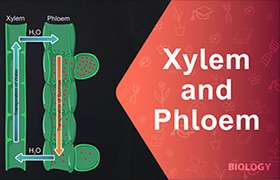CBSE Class 9 Answered
why are pimples increase in size ? Is it due to division of tissues?
Asked by | 26 Jul, 2012, 08:46: PM
A pimple is a small papule or pustule; small skin lesions or inflammation of the skin. They are oil glands (sebaceous glands) that are infected with bacteria, become inflamed, and then fill up with pus.
The sebaceous glands, which produce sebum, exist inside the pores of our skin. The outer layers of our skin are being shed continuously. Sometimes, dead skin cells are left behind and get stuck together by the sticky sebum, causing a blockage in the pore. Pore blockage is more likely to occur during puberty. More sebum is produced by the sebaceous gland - as the pore is blocked, it accumulates behind the blockage. This accumulated and blocked sebum has bacteria, including Propionibacterium acnes. Propionibacterium acnes generally exists harmlessly on our skin - however, when the conditions are right, it can reproduce more rapidly and become a problem. The bacterium feeds off the sebum and produces a substance that causes an immune response, leading to inflammation of the skin and spots.
Answered by | 27 Jul, 2012, 02:17: PM
Application Videos
Concept Videos
CBSE 9 - Biology
Asked by thangjamz.kabita | 31 Mar, 2024, 06:32: PM
CBSE 9 - Biology
Asked by rehansindagi00 | 23 Jan, 2024, 07:03: PM
CBSE 9 - Biology
Asked by shantabaibaile | 21 Nov, 2023, 02:34: PM
CBSE 9 - Biology
Asked by divyasisode15 | 27 Aug, 2023, 08:08: PM
CBSE 9 - Biology
Asked by negimahak2 | 24 Feb, 2023, 09:00: AM
CBSE 9 - Biology
Asked by febievangeline612 | 11 Jan, 2023, 02:44: AM
CBSE 9 - Biology
Asked by priyanshdhiman2008 | 31 Oct, 2022, 07:20: PM
CBSE 9 - Biology
Asked by shivamasheeshpurohit2012 | 07 Sep, 2022, 10:22: PM
CBSE 9 - Biology
Asked by Ravi | 28 Aug, 2022, 08:23: AM











